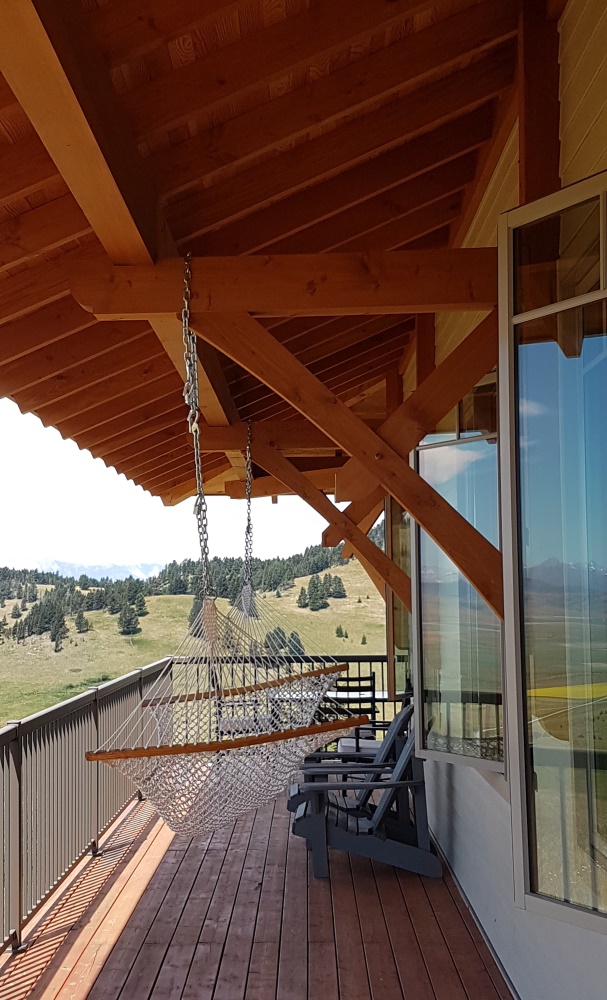
What does it cost to build a cabin? How about a contemporary timber frame home? If you’re considering an energy-efficient timber home but you’re concerned about the cost, have no fear! Timber homes can be very economical to build, if you make the right choices, in addition to saving you money through the years on energy costs and maintenance. In this article, we’ll tell you about less expensive types of timber, other cost-saving materials and what you can do to optimize your new timber home’s energy efficiency.
What Timber is Cheaper to Build With?
There are many varieties of wood, with certain types more common in a specific region. Some of the most expensive wood species are African blackwood, typically used for musical instruments, ebony, pink ivory and sandalwood. However, wood that’s commonly used for timber frames is less costly — the most common is fir, pine and spruce. The best guideline, if you’re looking to minimize the cost while obtaining high-quality timber, is to source the wood locally. The wood will be more plentiful and you won’t be paying a premium for transport, so this will reduce your timber frame construction costs. With Hamill Creek Timber Homes, based in British Columbia, you can choose from Douglas Fir, Spruce or Western Red Cedar timbers, which are all cut from seasoned logs from the B.C. interior, locally sourced from forests that are sustainably managed.
What Are Some Timber-Frame Construction Cost Saving Materials?
Other suggestions for a more affordable timber home relate to what you choose as finishing materials for walls, doors and windows, cabinets and fixtures, floor and wall finishes, plumbing and electrical systems, insulation and your roof. Keep in mind, though, that less expensive materials may wear out more quickly, requiring replacement.
Cost-saving tips for interior work includes:
- Walls – While exposed wood beams have an elegant appearance, an entire home with all exposed beams may add to the overall cost. One option would be to use timbers in showcase rooms (such as the living room), while less visible interior rooms can use less expensive drywall.
- Doors and Windows – According to Home Advisor, the cost of a door can widely vary, depending upon material as well as style. Wooden doors, especially if they are hollow, are less expensive than solid wood, aluminum, steel, wrought iron and fiberglass. Certain types of composite wood doors can be economical as well. As far as window frames are concerned, vinyl is a popular low-cost and medium-range option. Vinyl is also easy to maintain.
- Cabinets and Fixtures – Instead of most costly solid wood kitchen and bathroom cabinets, consider particleboard or medium-density fiberboard (MDF). MDF is heavier and denser than particleboard. Inexpensive plywood can also be used for doors, shelves and cabinets.
- Floor and Wall Finishes – Stone, brick, tile and metal all look wonderful, but these can be expensive materials for walls and floors. The most economical wall and ceiling finish is drywall (gypsum board). Wood floors are a good “mid-range” option, with many variations to choose from, such as engineered wood, laminate and hardwood. Wood is more attractive than a vinyl floor (the cheapest), yet it’s less expensive than a tile floor.
- Plumbing and Electrical Systems – This is one area where you don’t want to cut costs, as the energy savings and efficiency that you’ll get from a better system will save you money in the long run. For plumbing systems, copper pipes are traditionally used due to their corrosion resistance and reliability, but PVC piping is very popular.
- Insulation and Roofing – When it comes to insulation in a timber frame home, Structural Insulated Panels (SIPs) can save homeowners as much as 50% in heating and cooling costs compared to fiberglass insulation. SIPs are made from an insulating foam core that’s enclosed between two structural facings of oriented strand board (OSB), which is similar to particleboard. For roofing materials, asphalt is the most inexpensive option, whereas slate and metal roofs are the most costly.
What Can You Do to Make Your Home Energy-Efficient?
In addition to using SIPs to reduce heating and cooling costs by creating a strong building envelope, there are other steps you can take to make your new home energy efficient. This includes incorporating renewable energy (i.e. solar panels), using high-performance windows that are well-sealed, investing in Energy Star appliances and using Smart Technology devices to reduce energy consumption. Energy-efficient timber frame homes are already energy savers since wood is a natural insulator. The cost to build a cabin may be lower than you think.
The Total Cost to Build a Cabin or Larger Timber Frame Home
Whether you’re interested in a simple cabin or an elegant contemporary home, the final cost of a timber frame home will depend upon many variables, including labor and finishing costs. Because of this, it may make sense to purchase a kit. Hamill Creek has three different options—a Custom Timber Frame Kit, the Lock-Up Shell Kit and their Full Turnkey Package. The basic kit costs $40-50 per square foot, while the turnkey solution starts at $300 per square foot. These are rough estimates, as your cost to build a cabin will depend on the various materials that you choose.
Conclusion
The beauty of a timber frame home is that it is extremely flexible. There are many possibilities for both the exterior finish and interior design. The cost to build a cabin will depend on your preferences. For a more economical home, simplicity is key. The more embellishments you add, such as curved structures or a winding staircase, the more it will cost. But with the timeless sophistication of a timber frame home, you don’t need any fancy add-ons to create a stunning home that’s built to last.
Blog Archive / Timber Frame Construction: Green Timber vs. Kiln Dried Timber